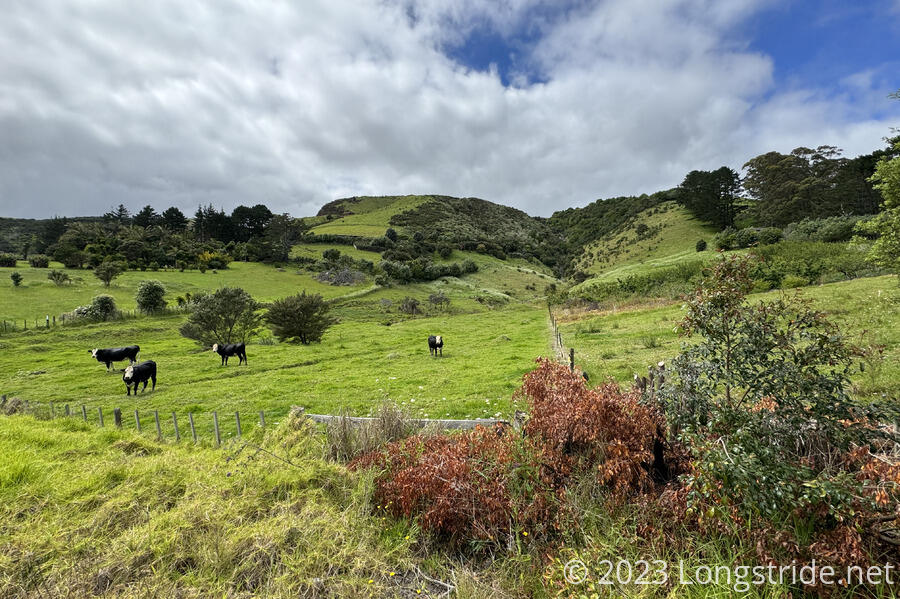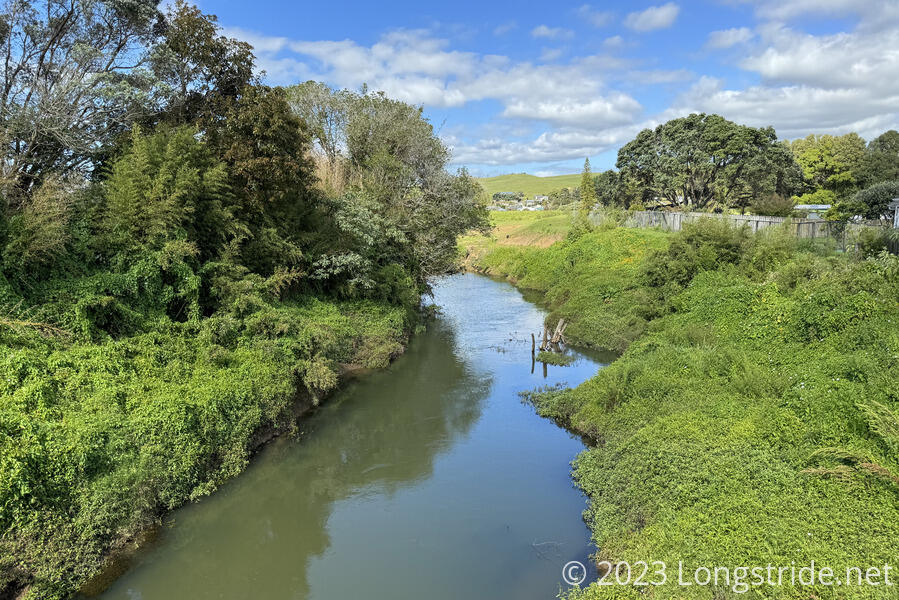A walk along a road brought us to Kaitaia, for our first resupply on Te Araroa.
After a bit of a late start, CareFree and I left the hostel, heading east out of Ahipara, starting a road walk to Kaitaia.
Just on the edge of town, a series of murals explained the origin of Ahipara’s name, from ahi meaning fire, and parapara, roasted fish set aside from a offering in honor of a prominent chief that forged a peace between two warring tribes of Te 'Oneroa-a-Tohe (Ninety Mile Beach).
This road walk (and tomorrow’s) is a result of the closure of the Herekino Forest, located east of Ahipara and south of Kaitaia. The forest is closed to protect its Kauri trees from Kauri Dieback, a fungus easily transmitted by movement of soil (such as on boots). Kauri can grow to be very large, imposing trees, up to 50 meters tall with trunks several meters wide, and can live over 600 years. They are found only in the northern portions of the North Island, and are now endangered, as a result of both Kauri Dieback and extensive logging that felled 90% of original Kauri forests by 1900.
We walked just under 15 km through mostly bright-green scenery along the somewhat narrow shoulder of a road between Ahipara and Kaitaia. Although initially cloudy, the sun came out in the late morning, making it a bit hot and humid. At least, there was often a light breeze.
Cows were a relatively common sight, and after months of seeing cows in desert-like landscapes in New Mexico and Wyoming on the Continental Divide Trail, they seemed a little out of place in such amazing lush-green landscape.
As the morning ticked on, traffic along the road gradually increased. It wasn’t overly dangerous, but we did have to keep an eye out, and the road certainly became less comfortable with more cars on it.
At one of the cow pastures we passed, all of the cows stood up and walked towards the corner of the property as we walked by, one mooing at us constantly.
We also passed a fruit and vegetable stand just off the road, but we didn’t take the slight detour to further investigate. Shaun later said he’d gotten a pair of (very large) avocados from the stand for only NZD $2, so it was probably our loss to not check it out. We had a good pace going and didn’t want to interrupt it.
Shortly before 1 pm, we returned to the town community center in Kaitaia where our bus from Auckland dropped us off. We visited the iSite to record our safe passage down Ninety Mile Beach, and to ask the quite knowledgeable staffer there about details of the next stretch of trail. We have another road walk out of Kaitaia, but it should be a similar level of traffic, likely even less because the road is closed for repairs further ahead.
Since rain is forecast in two days, when we begin our walk through the Raetea Forest, the first of the northern forests we’ll traverse. It is famously muddy, but the hope is the forest canopy will be sufficient to protect us from a light drizzle.
We got a private room at Beachcomber Lodge and Backpacker, where many of the hikers we’ve met over the past several days are also staying.
Our main priority for the day was to resupply. We’re getting roughly five days of food for the five days it should take to reach Kerikeri, the next town. This includes an extra day’s worth of food; we’re stopping tomorrow at a Krishna Sanctuary, which offers to feed and provide tent space for hikers who call ahead.
We had dinner at the Beachcomber Restaurant with Shaun, and (much later than we planned) returned to the lodge to order breakfast for tomorrow morning and re-pack our food for the trail.
To assist with mitigating some blisters from worsening on two of my toes, CareFree let me borrow one of her toe sock liner socks. It largely seemed to have helped, though I’m hoping that once my feet toughen up a bit, it won’t be necessary and I’ll be able to go back to my regular liners. (I don’t really like toe socks, since they feel funny, and they’re hard to put on and take off while hiking to dry my feet out.)
My feet aren’t really looking forward to another day of road walking tomorrow, but at least some of it will be on low-traffic gravel roads, rather than paved roads, so it should be at least a bit less stressful.


